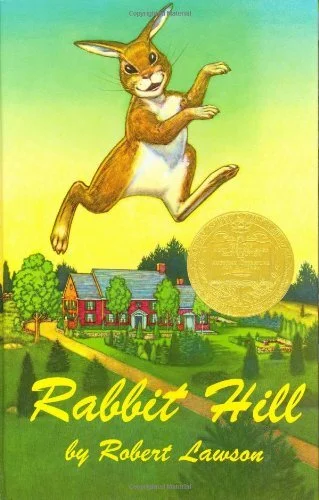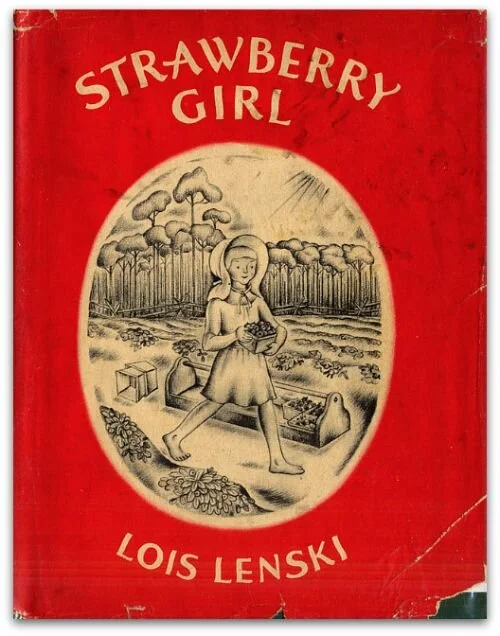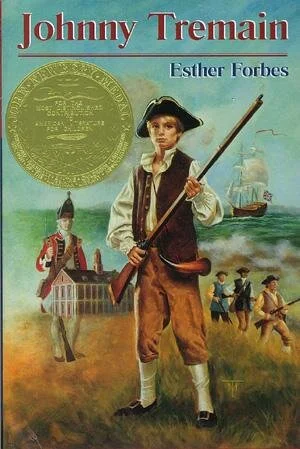Rabbit Hill (1945)
In World War I, the United States established the Women’s Reserve Camouflage Corps. Recruiting artists from a variety of mediums, the Camouflage Corps’s mission was to paint and design a variety of camouflage patterns that could be applied to ships, tanks, uniforms, etc. Thousands of French women volunteered to join the Corps, and it’s kind of charming to picture a bunch of artists having girl time while painting blue and gray blotches on giant warships.
It’s equally amusing to picture author/illustrator Robert Lawson among them. I can’t make the connection between Lawson’s participation in the Camouflage Corps and the fact that the Corps was part of the Women’s Reserve, but maybe it’s best that way. Regardless, Lawson spent time in France working with the Corps, even helping to put on shows for the children whose mothers were painting the ships. The surrealism of that image—the lone man in a group of female artists doing puppet shows for kids while their mothers beautify battleships—is striking.
By the time Lawson won the Newbery in 1945, he’d already illustrated dozens of books (among them Mark Twain’s Prince and the Pauper and T.H. White’s Sword in the Stone). And yet the Newbery is an author’s award, so even though he’d illustrated previous winner Adam of the Road, winning the award for his own writing marked when he became taken seriously as an author himself.
Rabbit Hill is only the second book Lawson ever wrote, and yet it’s clear that in his time illustrating children’s books he became a student of storytelling. It’s about as simple a tale as you can tell—a menagerie of critters who make their home on an abandoned estate have to deal with change when new owners move in. Compared to Johnny Tremain, it’s pure puff. But the pastoral charm that Lawson is able to bring to his characters through the combination of words and pictures is disarming. It’s also a much-appreciated change of pace after a few heavier, less-than-childlike books that reflected a country in the stormy throes of war.
It’s also a slight work, really more of a short story than a novel. Lawson totally nailed his vision, but his ambitions were simple, which keeps Rabbit Hill from having the same emotional impact as richer books on this list. It’s a trifle, but a consistently pleasant and endearing one. In 1945, maybe that’s what kids needed most.



